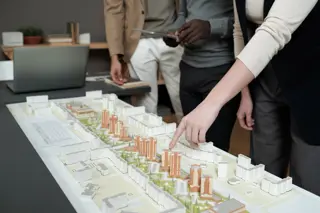Revolutionizing Development Timelines: Impact of Vasai-Virar Infrastructure Plans on Property Growth
 As Vasai-Virar becomes a key area for Mumbai’s suburban expansion, its infrastructure plans are changing property development timelines and land acquisition dynamics. Recent budget allocations and project announcements signal faster growth, with real estate investors adapting to new priorities.
As Vasai-Virar becomes a key area for Mumbai’s suburban expansion, its infrastructure plans are changing property development timelines and land acquisition dynamics. Recent budget allocations and project announcements signal faster growth, with real estate investors adapting to new priorities.
Metro Expansions: Catalyst for Rapid Development
The MMRDA-approved ₹40,187 crore budget for 2025-26 focuses on Metro connectivity, with allocations including:
- ₹3,247 crore for Metro Line 4 (Wadala-Kasarvadavali)
- ₹2,155 crore for Metro Line 2B (DN Nagar-Mandale)
- ₹1,579 crore for Metro Line 5 (Thane-Kalyan)
Impact on Timelines: These projects will save communication time between western suburbs and business hubs, sparking demand for residential and commercial spaces near stations. Developers are likely to speed up projects in emerging nodes like Vasai’s Metro Line 13 corridors.
Coastal Connectivity: Transforming Regional Access
Major infrastructure upgrades aim to unlock coastal areas: | Project | Budget | Impact | |-----------------------------|------------------|---------------------------------------------| | Thane-Borivali Tunnel | ₹2,684 crore | Cuts travel time to Mumbai, boosting Vasai’s appeal | | Uttan-Virar Coastal Road | ₹2,000 crore | Opens coastal regions to tourism and housing developments | | Marine Drive Coastal Tunnel | ₹1,813 crore | Enhances connectivity to Mumbai’s CBD, spurring investor interest |
These projects will shorten development cycles in coastal zones, making land consolidation strategies critical for early movers.
Vasai Outstation Terminal: A Game-Changer for Connectivity
The proposed terminal addresses long-standing mobility gaps, offering:
- Hub for long-distance trains, integrating Vasai into national rail networks
- Proximity to future Metro stations, creating transit-oriented development opportunities
Developer Strategies: Expect a surge in land acquisition near the terminal, with phased development plans to align with station construction timelines. Ancillary infrastructure (schools, hospitals) will follow, extending development phases.
Economic Growth & Employment: Magnets for Sustained Demand
Infrastructure-driven economic activity will:
- Attract industries and service sectors, generating new jobs
- Professionals are looking for budget-friendly homes with smart tech features near work hubs
- Stimulate retail and commercial developments along transit routes
Timelines & Challenges: While employment growth will pull population, land acquisition delays (especially in coastal areas) may slow projects. Mitigation strategies include partnerships with government bodies and early land banking.
Future Outlook: Strategic Adaptation for Stakeholders
- Investors: Target pre-construction phases in Metro corridors and coastal zones
- Developers: Prioritize partnerships for faster land consolidation
- Policymakers: Streamline approval processes for transit-linked projects
Vasai-Virar’s infrastructure revolution is not just about physical connectivity—it’s reshaping how real estate aligns with urban mobility goals. Those who adjust their development timelines and land strategies today will reap rewards in this high-growth corridor.